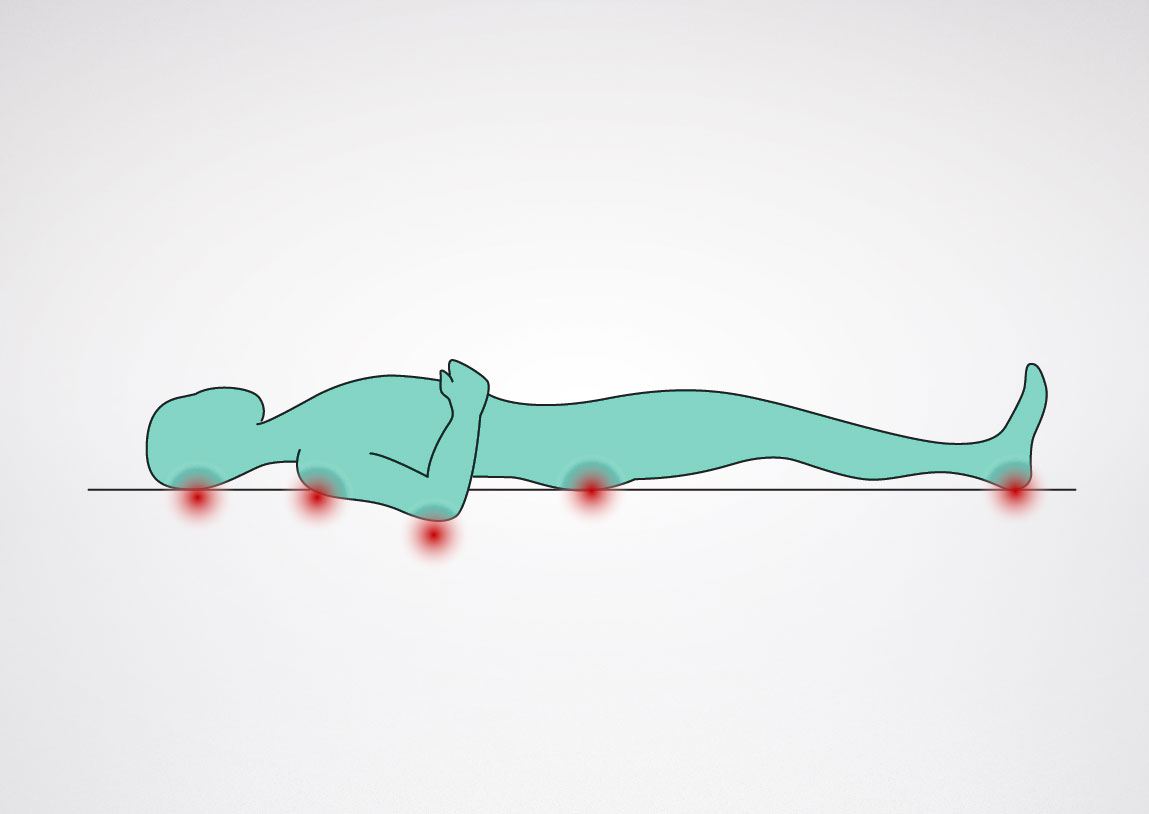10 Things you can do to prevent pressure ulcers at home

What is a pressure ulcer?
A pressure ulcer is an injury to the skin and underlying tissue, typically occurring when a person is confined to a bed or chair for prolonged periods of time. By disrupting the blood flow to an area under consistent pressure causes the skin to expand, which then develops into a pressure ulcer. If not properly treated pressure ulcers can become quite serious, causing pain, necessitate a protracted hospital stay, serious pressure ulcers can cause severe injury to the muscle or bone beneath the skin. If the pressure ulcer is not caught early it can develop into more serious conditions.
10 things you can do today to prevent pressure ulcers:
- Risk assessment: There are many types of risk assessments used to identify threats or risks to a patient developing a pressure ulcer. One risk assessment commonly used is the Braden Scale, developed by Barbara Braden and Nancy Bergstrom in 1988. The scale considers six factors that the patient is scored against to identify if there is a risk of a pressure ulcer developing. The factors are: Sensory Perception, Moisture, Activity, Mobility, Nutrition and Friction and Shear. Using the Braden Scale scoring guide lines, patients are scored from 1 to 4 for each category to get a total score - the lower the number, the greater the risk of a pressure ulcer developing. Ask your health professional to asses your risk if concerned.
- Inspecting the skin: It is important to inspect the skin regularly, noting any changes in colour, texture, turgor, moisture, pigmentation, any lesions, hair distribution and warmth. If the skin goes white when pressed or if the skin is red with no-contact then the blood flow has impaired and the damage to the skin has begun.
- Take care of the skin: Making sure the skin is clean and dry is important, especially before putting clothing on. When washing skin try to avoid scented soaps and talc as they can dry out skin and its natural oils. Try not to shower every day and this may have the same effect.
- Moisture: Moisturising the skin is important to helping the skin stay hydrated and helps reduce any friction of materials touching the skin, such as pyjamas and bedding.
- Hydration: One cause of pressure ulcers is poor blood flow around the body. Staying hydrated will reduce the risk of developing a pressure ulcer by encouraging blood flow around the body and in turn, maintaining the natural padding over bony points in the body.
- Nutrition: It is important to consume a balanced diet to ensure the body gets the nutrients and minerals it needs.
- Position: Patients should take care to ensure they are not sitting on wrinkled materials, instead sitting on smooth blankets/surfaces to prevent a pressure ulcer developing.
- Ergonomics: Making sure that surroundings are appropriate to support the completion of daily chores. For example, when deciding on the size of a bed make sure there is adequate space for repositioning to relieve the pressure from parts of the body.
- Repositioning: Changing position frequently is crucial to prevent pressure ulcers and relieving pressure on ulcers that have already formed. Adjusting seating/laying position regularly to relieving pressure off a particular part of the body.
- Pressure-redistributing cushions: There are many types of pressure-redistributing cushions on the market that can be used to prevent the development of pressure ulcers. One option is the Levabo Seat-All seat cushion, which is used to prevent pressure ulcers. The ergonomic design of the cushion is to make sure the stability of the patient will stimulate microcirculation of the skin which will optimise a better circulation. Read more here: Seat-all
References
- https://www.nhs.uk/conditions/pressure-sores/
- https://www.nice.org.uk/guidance/cg179
- https://www.cancerresearchuk.org/about-cancer/coping/physically/skin-problems/pressure-sores/causes-and-prevention
- https://aquilacorp.com/resources/blog/10-ways-prevent-pressure-ulcers/
- https://www.hollister.co.uk/en-gb/continencecare/continencelearningcenter/livingwithaneurologicalcondition/pressureulcers12waystopreventthem
- https://www.woundsme.com/uploads/resources/content_10451.pdf
Author: Millie Owen


